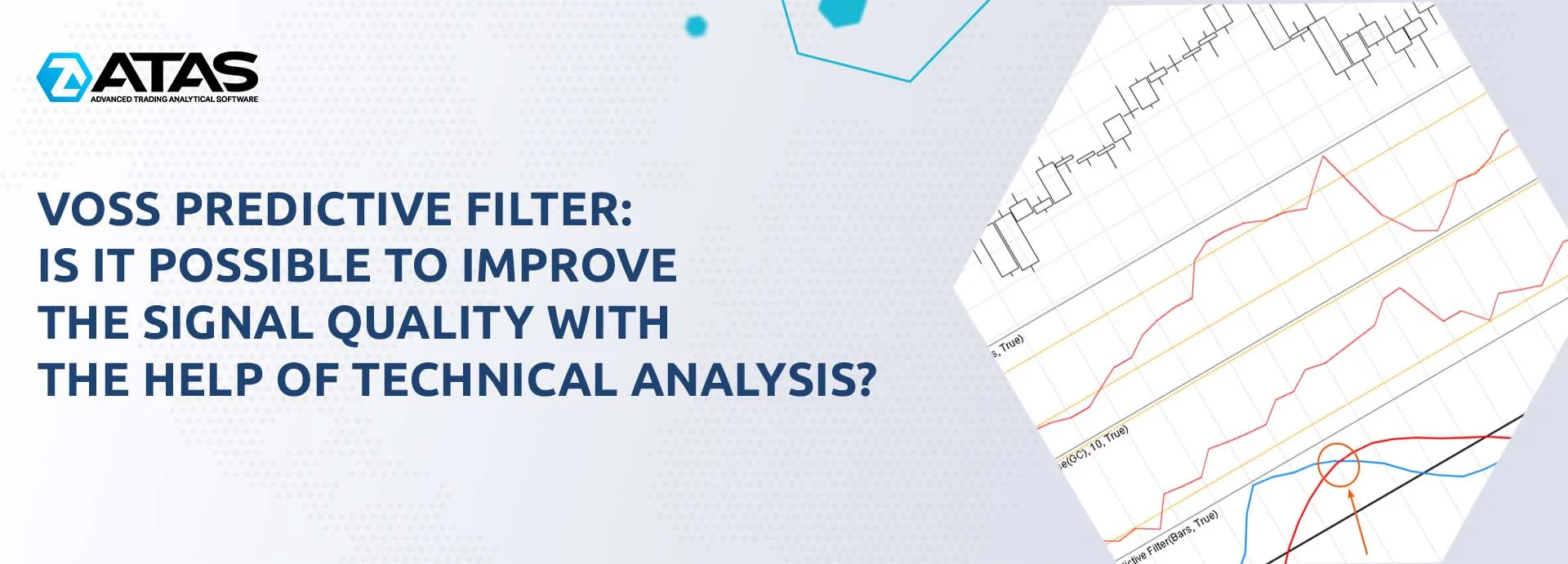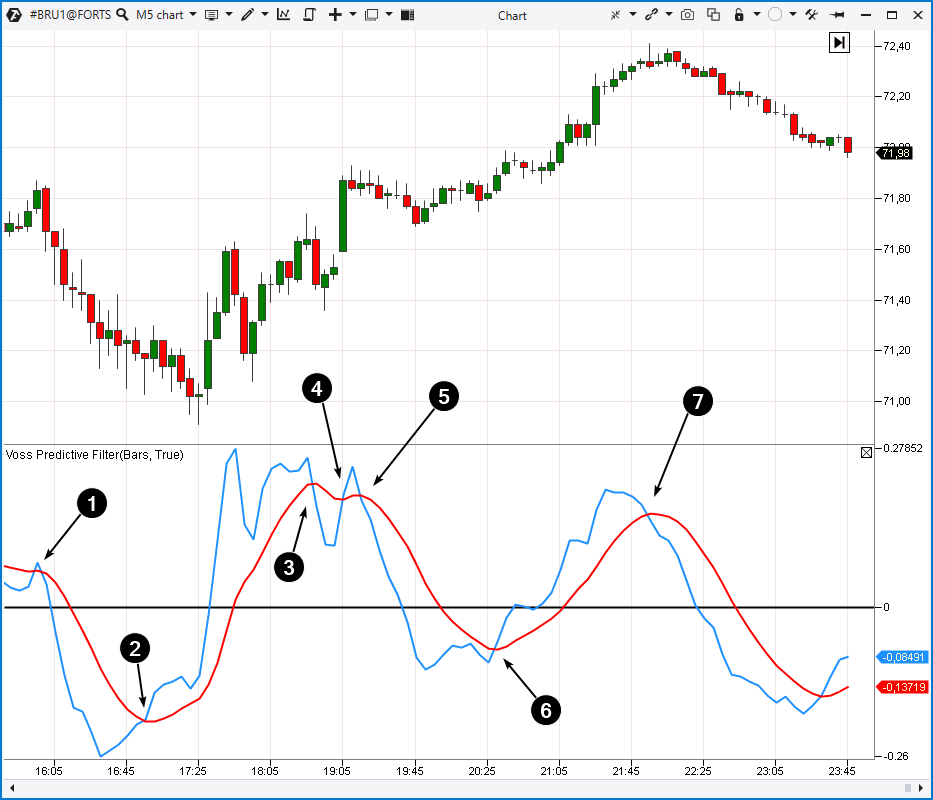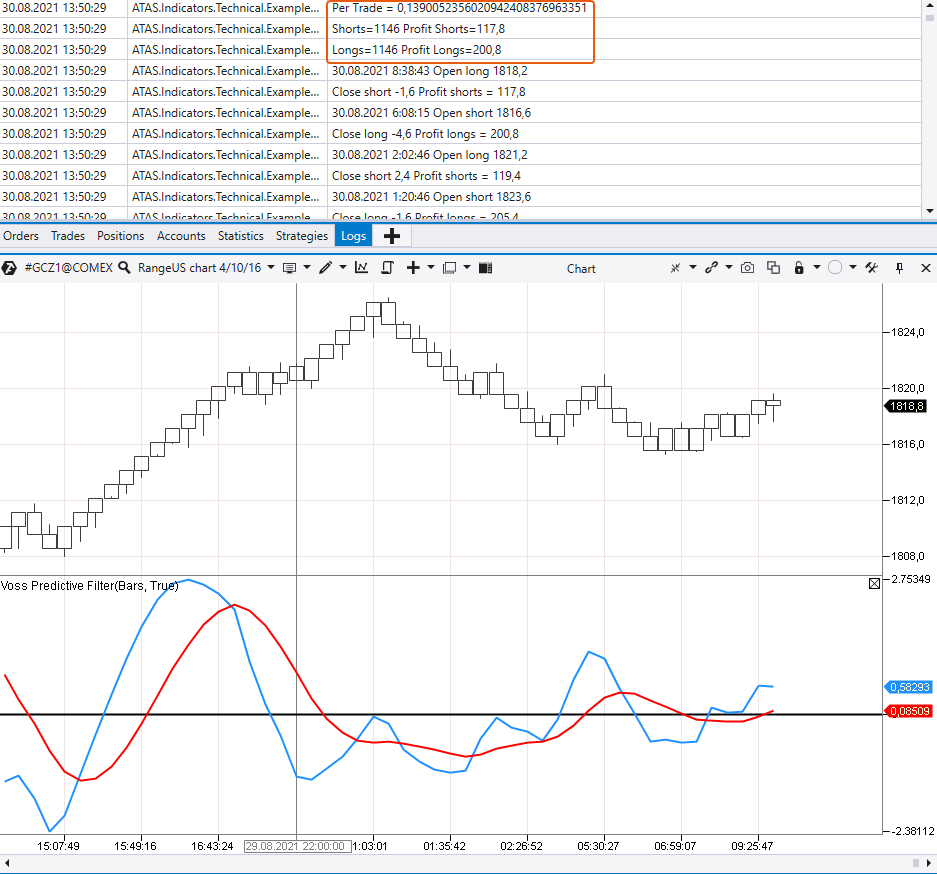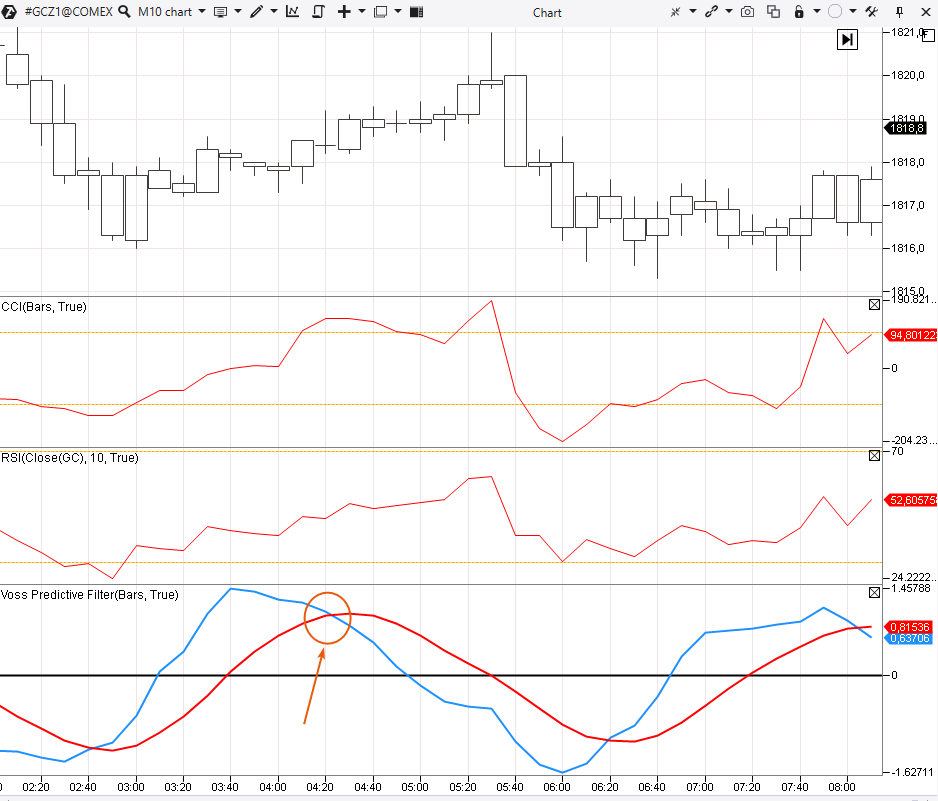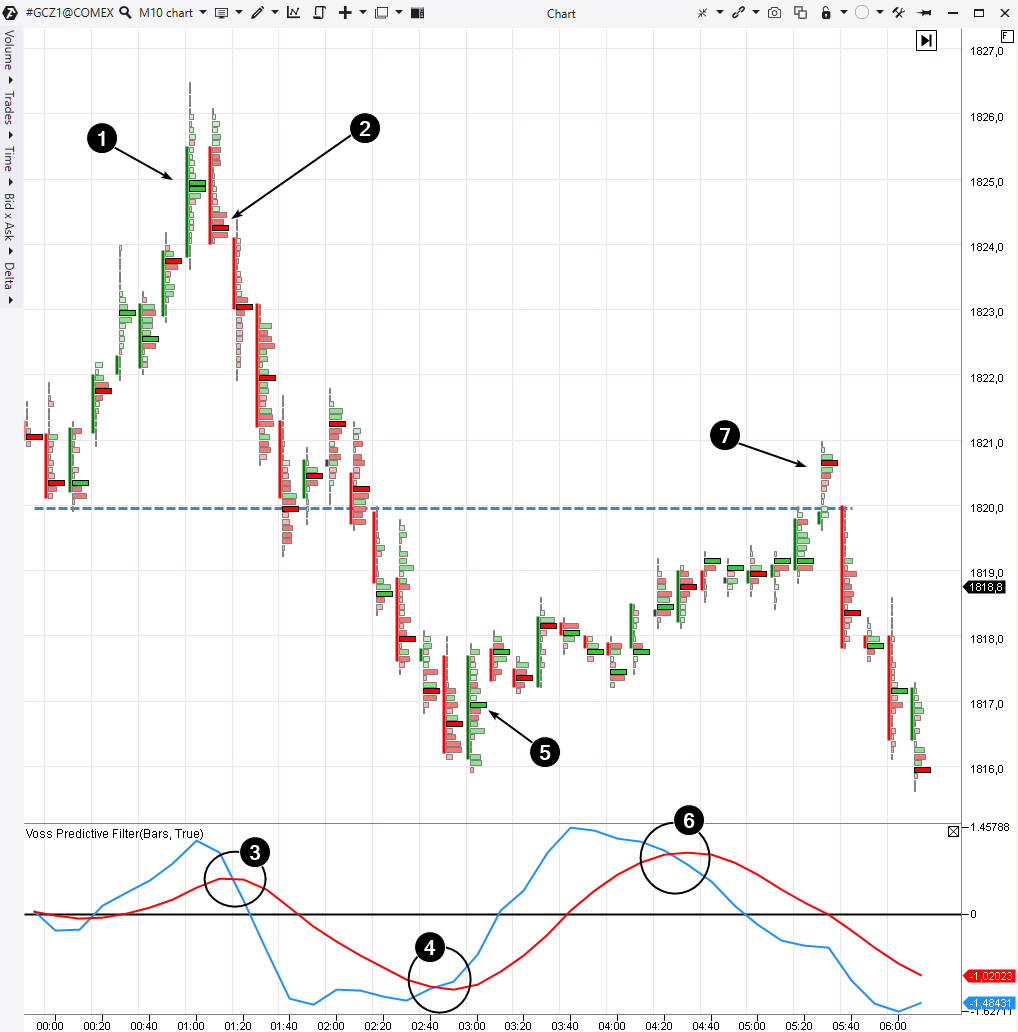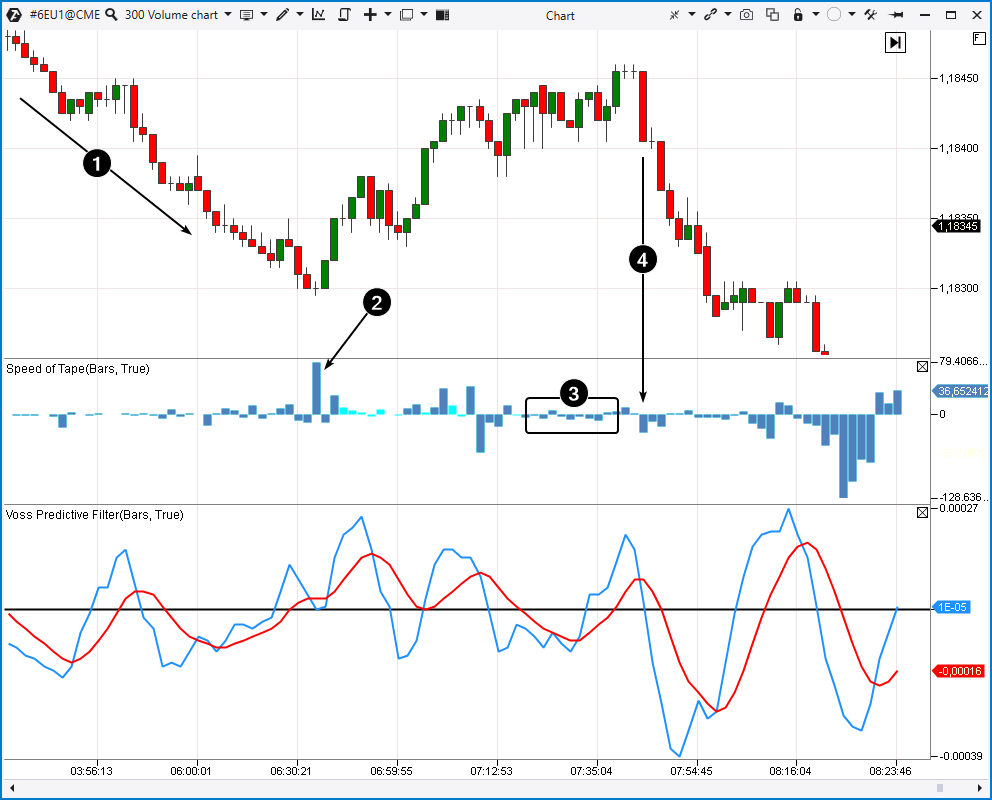The algorithm calculated that 1,050 long and the same number of short trades were executed during 100 days by the Voss Predictive Filter indicator line crossing signals. The algorithm writes the total result: 251.25 – 139.25 = USD 112 (when trading a minimum volume). However, since USD 1 in the price chart is 4 ticks and a ES tick is USD 12.50, the yield in money terms is 112 * 4 * 12.50 = USD 5,600.
And if we calculate commissions at USD 5.5 per round, the yield will be 5.5 * (1,050 + 1,050) = USD 11,550.
It turns out that, despite some positive mathematical expectation, the profit is unreachable, because the commission size exceeds the estimated yield more than 2 times.
One may note that trading by VPF signals produces a positive result if we take longs only. Namely, → yield = 251.25 * 4 * 12.50 = USD 12,562 and commissions = 5.5 * 1,050 = USD 5,775. Profit = 12,562 – 5,775 = USD 6,787. How good is this result?
The quotation pointed to USD 4,122 at the beginning of the period under consideration and to USD 4,509 at the end of it. The difference was USD 387. If you just buy 1 contract and hold it, the profit = 387 * 4 * 12.50 = USD 19,350, from which you need to subtract USD 5.5 of the commission.
It turns out that simple holding is better than active trading by the VPF indicator. Even if you disregard the commission.
What will the results be, if we switch from a stock index to, for example, raw material futures?
Experiment 2. Let’s add the algorithm to the Range US chart (4/10/16), which shows dynamics of trading gold futures for 113 days (from March 25, 2021, until August 29, 2021).

